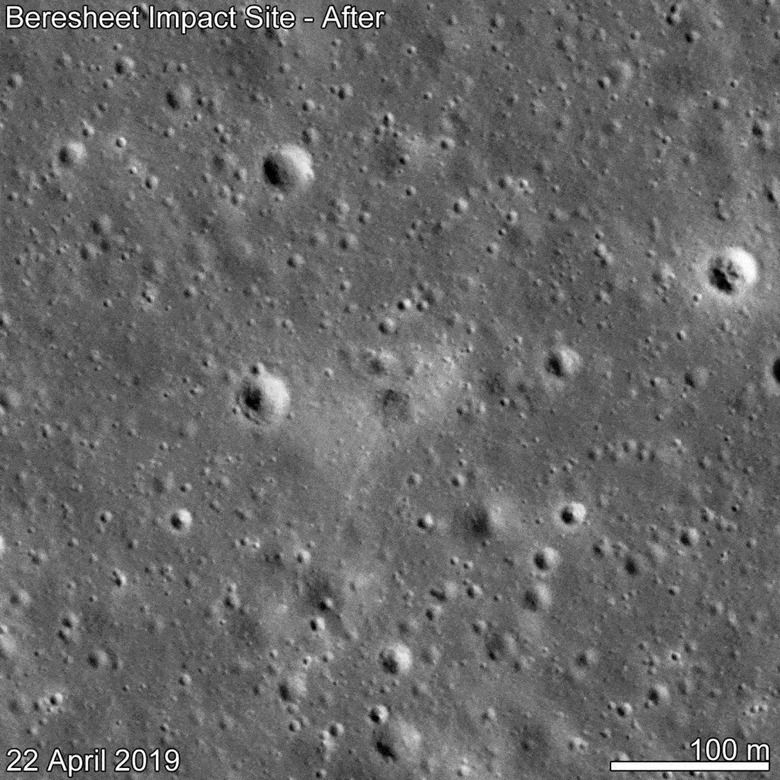NASA LRO Spots Beresheet Spacecraft's Impact Site On The Moon
NASA's Lunar Reconnaissance Orbiter (LRO) snapped multiple pictures of the Israeli Beresheet spacecraft's impact site on the Moon's surface. The images were captured in late April and published by the space agency on Wednesday, offering two different perspectives of the crashed robotic lunar lander. NASA says there are multiple pieces of evidence that show the captured crater was created by human, not meteoroid, activity.READ: Beresheet 2.0: Another Israel moon landing attempt underway
The Beresheet lander was launched on February 22 and nearly struck its Moon landing, though it ultimately experienced a technical error that caused it to crash land on the lunar surface. The lander's final resting place was spied by the NASA LRO on April 22; an image captured on that date is contrasted in the GIF below with one captured of the same spot in late 2016.
According to NASA, lighting conditions in the 2016 image were similar to the conditions visible in the April 22 photo. The obvious change centered in the GIF shows the overall impact zone where the lander crashed.

The spacecraft crashed on a part of the Moon called the Sea of Serenity, according to NASA. The image was captured about 56 miles above the lunar surface — the dark smudge is the surfaced that has been 'roughened' by the crash, resulting it being less reflective than the surrounding smooth landscape.
The site's 'tail' is consistent with the direction from which the spacecraft approached the lunar surface, among other evidence that we're seeing its crash site and not an impact caused by a meteor. According to NASA, the camera wasn't able to capture a near enough image to determine whether a crater or 'small indent' was created.
